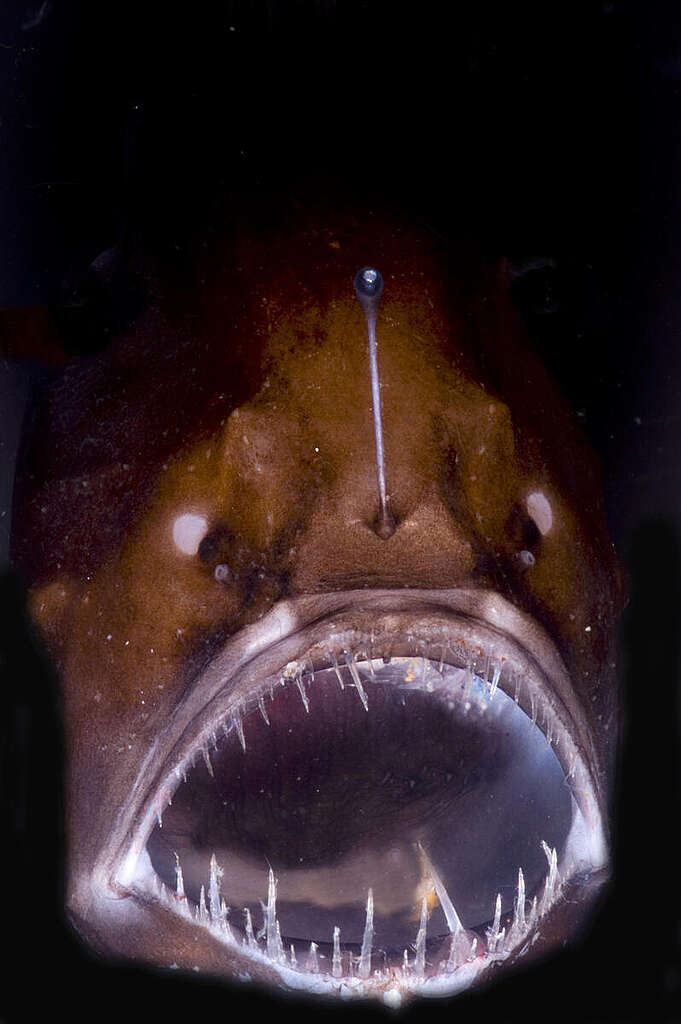Not all sea creatures can be as cute as baby turtles, but all sea creatures’ homes are vital and worth protecting. These five ocean animals might all look different but they all have a unique characteristic – and once you get to know them (and maybe try out our Instagram filter or Facebook filter – mobile only), they might just swim into your heart.
Angler Fish

With razor-sharp fangs jutting from a gaping mouth, the anglerfish has become extremely adept at hunting fish and crustaceans in the ocean’s dark depths. A globular lure or esca, dangling from a rod-like appendage on its forehead, emits bright bursts of light that attract prey. The light, however, doesn’t come from the anglerfish but from millions of bioluminescent (self-produced light) bacteria living in symbiosis with the fish.
If you think that’s fascinating, hold on to your hats. When it comes to reproduction, male anglerfish are nothing more than parasites that attach themselves to females. In time, the females absorb them until all that remains is the testes, which fertilise the eggs the females produce.
Nudibranch

It’s hard to believe these striking creatures are sea slugs and thieves. Don’t let their spectacular colours and patterns fool you. These tiny gems are the cream of the ocean’s criminal crop. They’ve perfected the ability to steal stinging cells from prey, like sea anemones, and assimilate them into their bodies to reuse later on.
Approximately 3000 nudibranch species roam the world’s oceans, from the Pacific to the Arctic, and have been given nicknames like sea rabbit, dragon, or Spanish dancer, which are just as colourful as they are.
Sergestes Larva

Young sergestes crayfish are scavengers that depend on the remnants of dead fish and phytodetritus to survive. A display of finely branched antennae sprouting from the larvae allows them to float freely through the water. Their large eyes not only add to their character but also help compensate for the light shortage in the deep sea.
Adult sergestes crayfish are masters at camouflaging themselves from predators on the prowl. Weak bioluminescence (self-produced light) on the underside of their bodies prevents them from casting shadows in the twilight. They’re able to adjust the glow’s intensity to suit the amount of light coming from above.
Dumbo Octopus

You’ve guessed it. This odd creature is named after the Disney character Dumbo, and just like the elephant, it flaps its ear-like fins to move forward as it floats across the ocean floor. The dumbo octopus belongs to the umbrella octopus group; their tentacles are webbed and when they’re spread out, they look like umbrellas. They live at least 4000m beneath the ocean surface, making this group the deepest living of all known octopuses. Unfortunately, these curious beings now face an existential threat if companies are allowed to mine the deep sea for metals. They’re usually about 20 to 30 cm long; however, the largest one ever recorded weighed just under 6 kg and was almost 2 metres long. How’s that for a floating octopus?
Their ocean homes
The oceans are home to abundant biodiversity, from adorable baby sea turtles and dolphins to these weird and wonderful creatures, but destructive human activities are threatening their very existence. The historic Global Ocean Treaty is a powerful tool that can help create vast ocean sanctuaries where precious marine life can recover and thrive, but governments now need to ratify it.
Governments also have a unique opportunity to stop the deep sea mining industry before it ever starts. They must prevent this destructive, extractive industry from damaging the oceans by putting a moratorium in place.
All ocean life is precious; therefore, governments must act swiftly to protect the oceans and stop deep sea mining.
Try for yourself!
Try our Instagram filter and find out what incredible creatures you are, then sign our petition to protect them.

Add your name to call on leaders to create new ocean sanctuaries and protect our blue planet.
Add your nameJeanette Meyer is a Global Digital Campaigner for the Oceans Are Life campaign, based in South Africa



